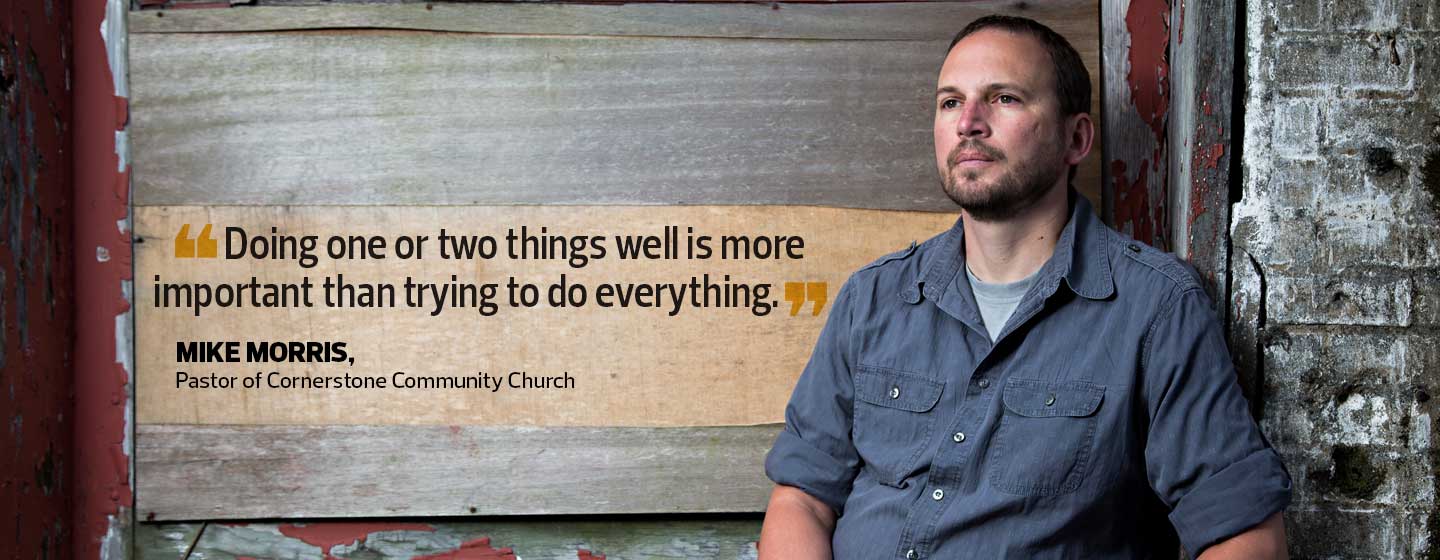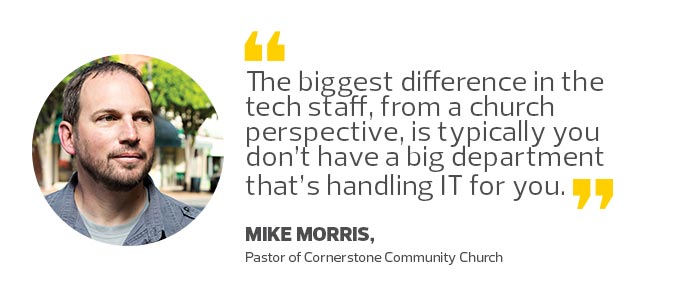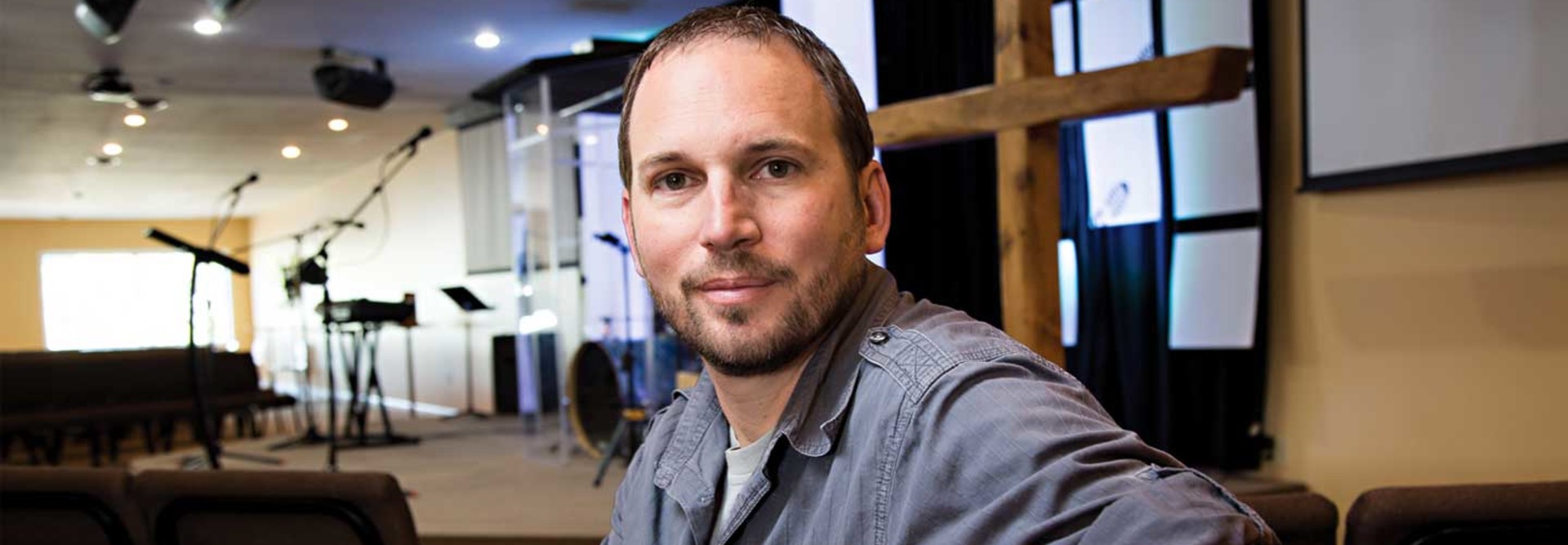Church Leaders Can Turn to Tech to Connect with Their Congregations
When it comes to small and budget-starved IT shops, churches should come to mind pretty quickly. That’s exactly the audience that Mike Morris, a former design engineer and now pastor at Cornerstone Community Church in rural Virginia, aims to help through his blog, FaithEngineer.com.
Interestingly, small and medium-sized businesses tend to have a lot in common with many churches: multiple players wearing multiple hats, trying to do a lot techwise with a little budgetwise. Morris is no different; although he’s the pastor at Cornerstone, he’s also its de facto tech leader.
At BizTech, we found his blog so compelling that he made the cut for our new Top 25 Must-Read Nonprofit IT Blogs. While there’s a definite bent toward church environments, there’s plenty of tech takeaways for nonprofits and small businesses as well.
BizTech Online Editor Ricky Ribeiro chatted with Morris to find out what he’s has learned at the intersection of tech and faith.
BIZTECH: Tell us a little bit about yourself.
MORRIS: The way I got started was kind of a round about way. I actually went to school to be a mechanical engineer. For 12 years, I worked as a mechanical engineer and my specialty was 3D modeling and animation, and rendering and design.
Through my engineering work, I got really familiar with a lot of 3D software, Photoshop, Illustrator and things like that. During the time I was working as an engineer, I was also working as a part-time youth minister at a little country church. That’s actually when I started my blog, so that’s why it’s titled “Faith Engineer.”
I ended up really being a full-time youth pastor and a full-time engineer. I was covering things that I was seeing in the engineering world, things I was seeing through my faith journey working with the church, and then at the same time we had three children.
My blog actually started in 2006 — 10 years ago — so it’s been going a while, and I’ve just kept it going. Its been my own personal journey, but I’ve always had that strong interest in technology. When I was a teenager, I was building computers and learning new software. I’ve just always had that bent towards technology.
About eight and a half or nine years ago, I switched from being a full-time engineer to a full-time pastor. I started working with the local church and they asked me to come on board full time as their pastor. From that point, my journey started being more about how I could use my background — the technology things I’ve experienced — in more of a faith setting.
Let me tell you a little bit about my church. We’re in a small town in the mountains of southwest Virginia, the southwestern part of Virginia. We’re really in the middle of nowhere so to speak, about two hours from any major city. It’s in a town of 6,500 people.
Most resources online for the faith community are based toward larger churches with larger budgets. Our own journey of trying to figure out how to do things on a shoestring budget, that’s really what’s influenced a lot of what’s on my blog. How can I help the smaller church that doesn’t have a full-time IT person, that doesn’t have a tech staff, that just has all volunteers using hand-me-down equipment? I blog about things like how you can build podcasts, and how can you build your own website.

BIZTECH: Can you give us a snapshot of your church infrastructure?
MORRIS: At Cornerstone, we have a peer- to-peer network with five computers. Two run video projection systems, one is for children’s check-in, and the two others are used as touch-screen kiosks.
We use Google Apps for all our email needs, calendar sharing and file sharing for our leadership team. Our Wi-Fi system is built around the Ubiquiti UniFi platform. We have a Ubiquiti EdgeMax EdgeRouter Lite and a Ubiquiti POE ToughSwitch powering our access points and Wi-Fi network.
For backup and local file sharing, we have a Netgear ReadyNAS on the network.
We also have found that Apple TVs work well with our video systems. Many of our small groups and classes use the Apple TVs to share videos from their phones or iPads.
For churches and small businesses, using solutions in the cloud has enormous benefits. Our church management system is online, so it can be accessed from anywhere.
For me as a pastor, I feel that I am most effective when I am not in the office and instead am out meeting people in the community. Being able to work from the local coffee shop or work from home has been important for me as a leader.
BIZTECH: Which technologies are you most familiar with, and which technologies do other churches most want to know about?
MORRIS: I think there’s two for me that I kind of gravitate toward. One is video projection, displays and worship software. That seems to be a hot topic for many churches. They want to incorporate screens and video into their church, but they don’t know how.
I end up talking with a lot of local churches about how to can incorporate video into services — everything from IMAG (image magnification) to just worship song projection, where you have the lyrics on the screen. That’s one area.
And then the other area is website design. And I even do that as a side business, working with a few churches on their websites. I help teach and train them on how to update their own websites.
BIZTECH: What’s it like to build out an IT infrastructure on a tight budget?
MORRIS: I’ve learned a lot through my own journey of having to investigate and find what works. We were looking to increase our Wi-Fi infrastructure, and so we went with the UniFi system, which actually was a great fit for us.
We installed four access points. I did it myself — again shoestring budget. I was up in the attic running wires and running Ethernet, but it’s worked out great for us, and so I’ve had others ask me about how to create a separate guest network that’s throttled back and then a full network for leadership that has access to printers and network storage devices.
The biggest difference in the tech staff, from a church perspective, is typically you don’t have a big department that’s handling IT for you. You may be dealing with people who don’t have technical know-how. There may be one or two people who work in an IT department that have limited time and who may come in to volunteer. That means you have to find something that can really be used easily, set up easily, configured easily.
That’s one of the big things from a video perspective: teaching churches how to use YouTube or Vimeo. You’ve even got the newer things, like Periscope. Many pastors are starting to use Periscope now. It’s really cool to see how churches are taking hold of some of these things. When you have a solution that’s free, something like Periscope, that’s when churches kind of gravitate toward it. They’re looking for that low-cost way to get the message out.
There’s a big market for something that looks professional on a very cheap basis.
BIZTECH: How do you assess and evaluate what you should and shouldn’t spend limited funds on?
MORRIS: I can speak about our experience, although a lot of churches and small organizations are in a similar position. We spend a lot of money on projectors, Wi-Fi, things that are the essentials. The biggest technology expenditures for us are computers and projectors.

BIZTECH: What about mobility?
MORRIS: Even though we’re in a small town in the middle of nowhere, we have a lot of young families. So from the very beginning, we’ve been pretty involved with mobile devices. I preach from my iPad. I even have a podium with an iPad built in. It’s completely enclosed, so I don’t carry it up there.
And we put all our sermon notes on YouVersion, a bible app. It knows where you’re located from the geo-location information on your phone. It matches it up and says, ‘OK, here’s the sermon notes for the church you’re in right now.’ And so the congregation can actually follow along as I’m preaching and take notes on their phones or any mobile devices they have.
We’ve done that for years now. You don’t have to feel weird for pulling out your phone during church. It’s kind of a cultural and generational shift, knowing that it’s OK to actually use your mobile device during church.
Since I have a web design background, I developed a mobile app on the cheap, and it’s on the app store. It links to everything from prayer requests and sermon audio and video to sermon notes and the YouVersion events. We don’t do live-streaming yet. That’s a big hurdle if we want to do it well. But we have the sermon from the previous week up by Monday or Tuesday, so anyone can get online a few days later and watch it.
BIZTECH: How would you recommend small organizations start modernizing?
MORRIS: The key is to communicate the why before you do it — and to move slowly. Most churches have fewer than 200 people. The big mega churches get all the attention, but the majority of churches are small churches with a lot of tradition, with a lot of history.
Just like in business, if you start out at a new church or on a new church plant, you’ve got a lot of freedom from Day One about how you set up technology. But if you’re in an existing church, you’ve got to move slowly and really communicate why you’re doing it and how it’s going to help.
Doing one or two things well is more important than trying to do everything. Make incremental changes. Maybe start with digital display and an upgraded audio system.
Maybe one of the first steps is building the Wi-Fi system so people can actually get on their devices. Just try to break it down into small steps that are manageable.
For us, we’re on a yearly budget and so I usually pick two or three focus areas for the year where I want to make improvements. I already have some ideas about what I want to do for next year with the technology budget, but I have to break it down year by year and focus on what we can actually accomplish.
BIZTECH: So what’s on the docket for this year?
MORRIS: We’ve been doing more stage design and lighting. That’s one of the things we’ve done, and we’ve ordered a new video camera. We replaced a children’s ministry computer that was about 10 years old and that was on its last legs. I put a Mac Mini in for that system. We’ve got another projector to replace that’s again 10 or so years old — so just little things here and there.
It’s just about creating a road map for where we want to go and what we want to do.









